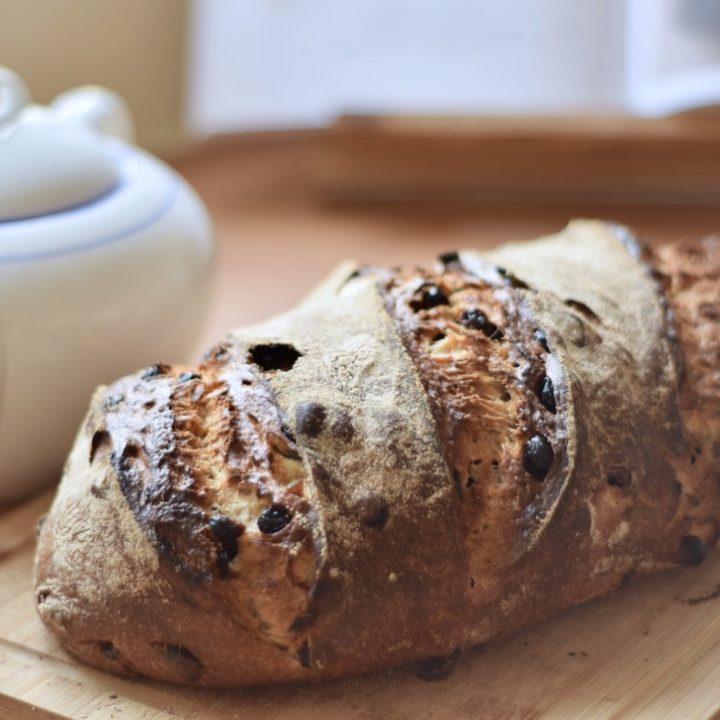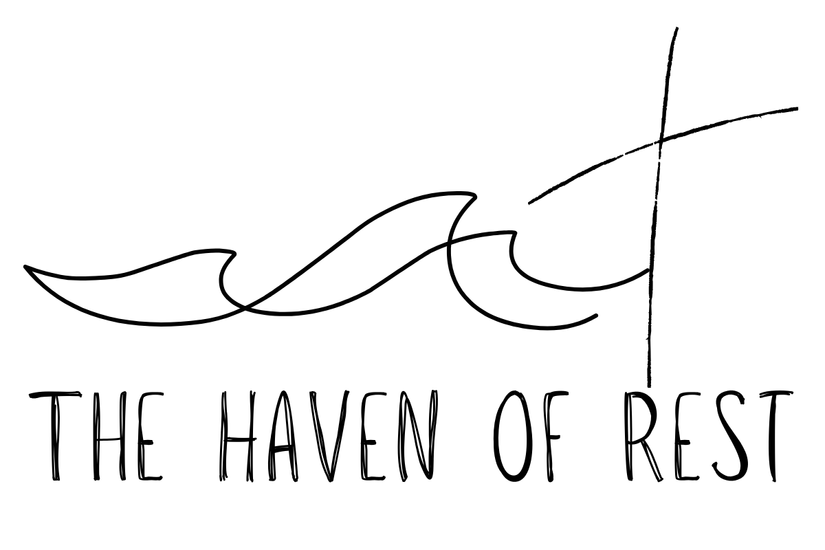
Written by: Tahnee Wientjes
First Published: January 19, 2022 Updated: December 2, 2024
Sourdough raisin bread is perfect for a healthy breakfast or a nutritious snack during the day. With a generous spread of butter, it tastes amazing. It is made with ancient emmer wheat and spelt for a unique flavor & all the nutritional benefits.
Table of Contents
Why sourdough?
Why would you want to bother and take two days to bake sourdough bread when you can take a package of yeast and fix it in a few hours? Well, here’s why…
The healthy bacteria in sourdough make this bread easier to digest. Besides that here’s are more benefits to baking with sourdough.
- “Unlocks” nutrients
- Amazing taste
- Lower gluten content
- Lower phytic acid
- Easy to use with ancient grains
- Full of healthy bacteria
- Natural ingredients
- Unprocessed
Using a cultured starter to bake bread
By fermenting, the foods are pre-digested so to say. The healthy bacteria help break down the phytic acid, making it easier for your body to use the nutrients.
You could bake two loaves with the same ingredients, one with yeast, and one with sourdough. When you would look at the nutritional value it would tell you the same, but…
It might very well be that you’ll be able to digest the sourdough loaf better and thus you would be able to take in much more of the nutrients. You are what you digest is what they say.
Also, the bacteria help to maintain a healthy gut, which in turn helps make a healthy immune system.
Healthy bacteria
Our bodies need bacteria. They help us to digest our food and take out important nutrients.
That’s why it’s so important to prepare food the right way.
Culturing is one of those ways to add more (gut) healthy bacteria to our diet.
New Recipes
All new, nutritious recipes straight to your inbox!
Subscribe to the newsletter & never miss out.

Natural & unprocessed
Why choose processed when you can keep it natural? I like our food to be as unprocessed as can be & usually, that means that I’ll have to make and bake our meals from scratch.
By choosing unprocessed natural products, you’re (usually) also choosing the healthier option.
In the commercial processing of food often a lot of healthy components are lost or they contain additives that our bodies just don’t need.
When you bake bread yourself, you can choose the ingredients, so you know exactly what you’re serving your family.
Ancient grains
If you’ve been here a while you might have noticed that I bake my goods with ancient grains. So, let me give you a few sentences on the why…
Many of todays wheat varieties are hybridized. That means that certain qualities of two varieties of wheat are selected and cross-bred.
This is mostly done to create a bigger yield and to make them more disease-resistant, not for the health benefits.
Modern-day wheats are made up so differently from what they used to be, that our bodies have a hard(er) time digesting them.
Ancient grains like einkorn and emmer naturally have a much lower gluten content and contain more proteins.
Sourdough raisin bread
Our children love this bread. While they are not a big fan of store-bought raisin bread, this one was a real hit.
This bread is perfect for a special occasion, brunch, or dusted with powdered sugar, for a Christmas breakfast.
Mixing the dough
When you mix the dough it’s important not to mix in the raisins right away.
The raisins should be added when you start the stretch & folds, or even after the stretch and folds you can dimple them in. But they should not be added as soon as you’re mixing your flour, salt, water, etc. If you do you’ll end up with (more) crushed raisins.
If you have the time, you’ll be doing four “stretch & folds” before you shape the dough.
If you have enough time, it’s best to soak the raisins for a few hours or even overnight. That way they won’t absorb much of the moisture from the bread once baked, preventing it from drying out too much.
Stretching the raisin bread dough
To achieve a nice and strong, but supple dough and a nice crumb once baked, you’ll need to do some stretching and folding.
If you don’t have the time to do so or in case you forget… which I always do… You’ll end up with an equally delicious sourdough bread, only the crumb and structure might be slightly different.
I find that with a good four “stretch & folds” I get more and larger, irregular holes in the dough.
Less stretching and folding will result in fewer holes and a more dense crumb. Don’t worry if yours turns out with a less rustic look, it will taste just as good.

Sourdough raisin bread with ancient grains
This healthy sourdough raisin bread is perfect for a healthy breakfast or a nutritious snack during the day. Made with ancient emmer wheat and spelt, it contains all the health benefits.
Ingredients
- 200 grams of whole emmer wheat (40%)
- 300 grams of spelt flour (60%)
- 250 grams of water (60%)
- 100 grams of sourdough (20%)
- 50 grams of whole whipping cream (10%)
- 50 grams of melted butter (8%)
- 10 grams of sea salt (2%)
- 250 grams of raisins
Instructions
Please read the notes below before you start.
The night before you want to make the dough, feed your starter at 100%. That means equal amounts of water and whole rye flour. I like to use 50 grams of starter and add 100 grams of water and 100 grams of whole rye flour. Soak the raisins overnight.
The next morning you'll make the dough. Add 100 grams of fed starter to a medium size bowl and add water and melted butter. Stir until sourdough starter is dissolved in the water, cream and melted butter.
Add both emmer and spelt to the water, cream, butter and starter mixture. Before you start mixing, sprinkle the salt over the flour and distribute, making sure you don't have any clumps of salt! Mix the ingredients untill it forms into a nice, round, slightly sticky ball.
Depending on how much time you have take the slow or quick route.
Slow...
Cover the bowl with a tea towel and let it rest for about an hour. Add the raisins when you do the last two stretch and folds. Then do stretch and folds, 3 to 4 with 30 minute intervals.
Place the dough in a well floured proofing basket.
Place in the fridge, uncovered, and proof overnight.
Quick...
If you don't have the time to do the stretch and folds, add the raisins to the dough and place the dough in the proofing basket and place in a fairly cold environment, but not as cold as your fridge. You want your dough to continue proofing, but not as fast as it would in a room temperature environment. You also don't want to slow it down as much as your fridge would. Cover the bowl with a tea towel or plate and let sit until the next morning. This works if you make the dough late at night and bake in the morning.
Baking
Place your Dutch oven or chamotte stone inside the oven. Preheat the oven to 250°C or 482° F for about an hour. Take your dough and remove it from the basket, place it unto a floured wooden board, shape if necessary and score. Bake for 20 minutes with steam. After 20 minutes release steam and continue to bake for 17-20 minutes depending on how dark you desire the crust to be.
Remove from oven and if you can wait, give it a few minutes to cool before slicing.
Notes
Since you'll use whole emmer wheat in the dough, you can feed your starter with whole emmer wheat instead of whole rye.
I recommend you only choose the "quick-route" when you have a well established, strong and mature starter.
If you don't have a proofing basket you can use a rectangular cake mould. Line the mould with a tea towel and generously dust it with (rice) flour. Rice flour doesn't develop gluten so it's great for dusting since it won't make your dough stick to the surface.
Don't add the raisins right away when you start mixing, or you'll end up with more crushed raisins. Add them when you have a fairly cohesive dough.
Are you a beginner at sourdough? One tool I highly recommend is a Dutch oven. It almost always give good results and a loaf with a nice spring. And consider subscribing to use my free e-book "Starting Sourdough".
Save for later…


